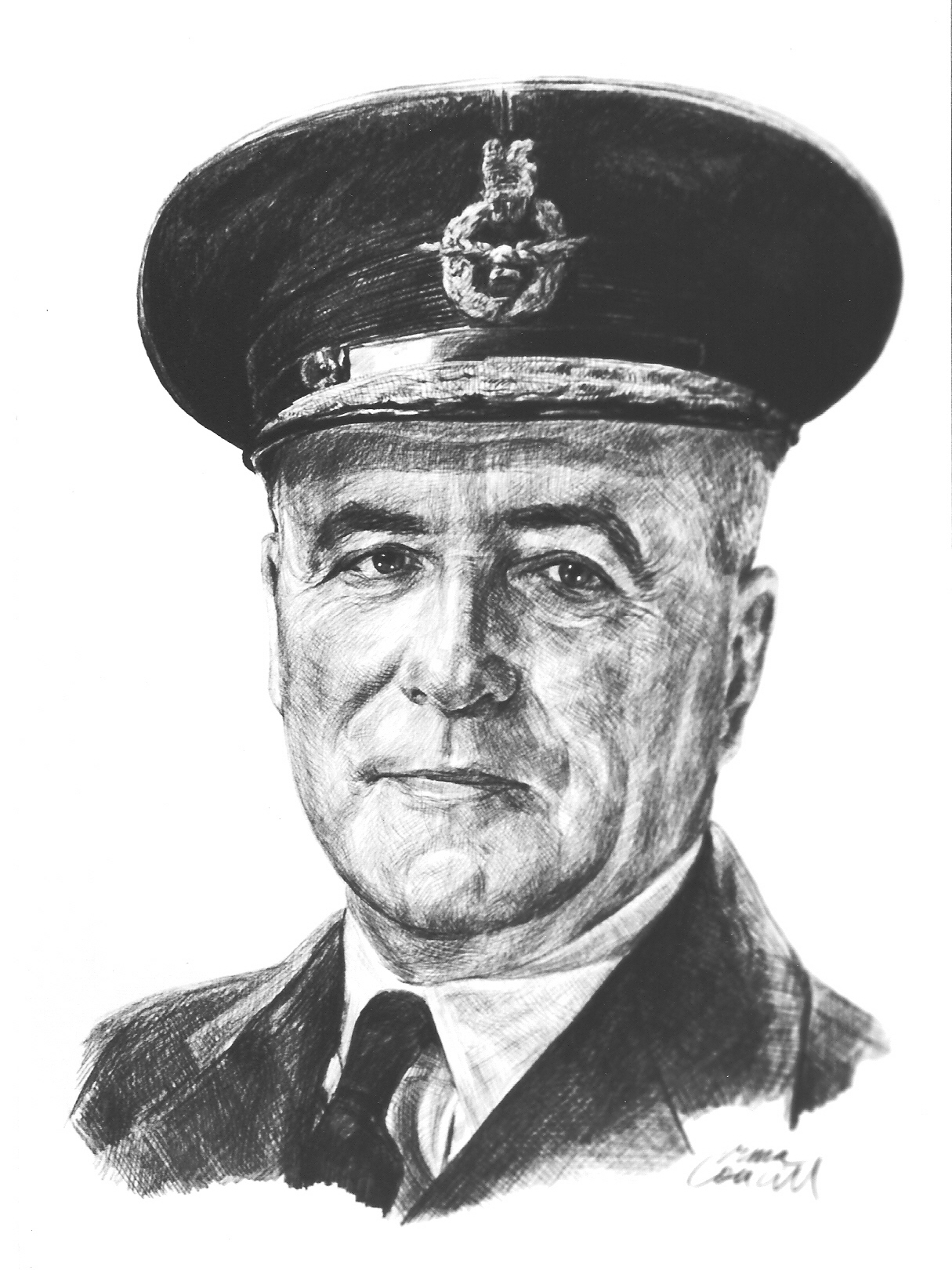Robert Leckie

Birth Date: April 16, 1890
Birth Place: Glasgow, Scotland
Death Date: March 31, 1975
Year Inducted: 1988
Awards: CB; DSO; DSC; DFC; CD; Legion of Merit (USA); Legion of Honour (France); Order of the Crown (Belgium); Order of the White Lion (Czechoslovakia); Order of Polonia Restituta (Poland); King Haakon VII's Cross of Freedom (Norway)
His dedication to the development of civil and military aviation together with his exceptional organizational skills and desire for perfection have been of outstanding benefit to Canada
Flying out of Dartmouth
Robert Leckie, C.B., D.S.O., D.S.C., D.F.C., C.D., was born in Glasgow, Scotland, on April 16, 1890, and at the age of sixteen, immigrated to Toronto, Ontario. In 1915 he joined the Royal Naval Air Service (RNAS) after learning to fly at the Curtiss Aviation School in Toronto, at his own expense. On completion of his training he was commissioned and following further flight training in the United Kingdom, was posted to RNAS Station Great Yarmouth where he flew Curtiss HS-2L flying boats for the duration of the war.
For three years Leckie flew out of Great Yarmouth, attacking Zeppelins and flying anti-submarine patrols into the enemy stronghold of Helgoland (Heligoland), a small island in the North Sea off the coast of Germany. He had a reputation for being able to fly in the worst North Sea weather. His first Zeppelin kill, the L22, was made on May 14, 1917, a particularly dangerous operation from a slow flying boat. On August 5, 1918, during a Zeppelin raid, he was flying a de Havilland DH-4, and on this sortie shot down Zeppelin L70, which had on board the Commander of Germany's Zeppelin fleet, Peter Strasser.
A Daring Rescue
Following an anti-submarine mission on February 20, 1918, Leckie carried out a daring rescue after sinking one of two German submarines involved in the attack. He saved the lives of the crew of a DH-4, a land plane which had to put down in the North Sea because of heavy enemy damage. Leckie, who was accompanying the DH-4 on this raid, decided to land alongside it, knowing he would be unable to take off in his Curtiss H-12 flying boat because of heavy seas. After picking up the two crew men, he taxied towards England until he ran out of fuel, then drifted for sixteen hours before they were taken in tow by a naval vessel. For these actions, he was awarded the Distinguished Service Order (D.S.O.), Distinguished Service Cross (D.S.C.), and Distinguished Flying Cross (D.F.C.).
The First Trans-Canada Flight
In 1919, with the rank of Wing Commander, Leckie was loaned to the Canadian government where he worked for the Canadian Air Board as Director of Flying Operations. In 1920 he organized and led the first trans-Canada flight starting from Halifax, Nova Scotia, in a Fairey Seaplane. His co-pilot on this trip was Basil Hobbs. From Halifax to Winnipeg, Manitoba, the airplanes used were flying boats. From Winnipeg, other pilots using wheeled aircraft were used to complete the flight to Vancouver. The flight took ten days with an actual flying time of 49 hours. This was the first time that mail had been carried from coast to coast by air.
As Director of Canada's Air Board in the early 1920's, Wing Commander Leckie directed the start of forest fire and anti-smuggling patrols, treaty money flights to Indians in isolated areas, and general communications and transport flights, his work was considered to be the beginning of Canada's civil air operations, which laid the ground work for the future development of mail and passenger services across Canada.
New Opportunities
When the Canadian government decided to organize the defence forces into a single division under the Canadian Army, Colonel Leckie returned to the Royal Air Force (RAF). After a tour with Coastal Command Headquarters, he took over the flying command of HMS Hermes, one of Britain's early aircraft carriers. He served in various other capacities, and in 1935 he was made Director of Training of the RAF. He was responsible for the training of many of the men who would soon fight in the Battle of Britain. In 1938 he was posted to Malta as Air Officer Commanding of the Mediterranean area with the rank of Air Commodore.
Accomplishments and Honours
Leckie made a number of representations to the RAF to establish flying training schools in Canada. In 1940 he was seconded to the Royal Canadian Air Force (RCAF) and given the responsibility of organizing the British Commonwealth Air Training Plan (BCATP). At its conclusion, the BCATP had trained 131,553 air crew from 11 countries, a great achievement for Canada. In 1942 Leckie transferred to the RCAF with the rank of Air Vice-Marshal. In 1944 he was promoted to Air Marshal and appointed Chief of Air Staff, a position to which he gave dedicated service and unexcelled leadership during the final year of the war and the immediate post-war years. He received the Canadian Forces Decoration (C.D.). He retired from the RCAF on September 1, 1947.
During his career he was named a Companion of the Most Honourable Order of the Bath (C.B.). He was awarded the Commander of the Legion of Merit by the United States, Commander of the Legion of Honour by France, Grand Officer of the Order of the Crown by Belgium, Grand Commander of the Order of the White Lion by Czechoslovakia, Grand Commander of the Order of Polonia Restituta by Poland, and the King Haakon VII's Cross of Freedom by Norway. Following his retirement, he was appointed special consultant to the Air Cadet League of Canada (Belt of Orion 1989). He died at the age of 84, at Ottawa, Ontario, on March 31, 1975.
Robert Leckie was inducted as a Member of Canada's Aviation Hall of Fame in 1988 at a ceremony held in Edmonton, Alberta.
To return to the Inductee Page, please click here.
